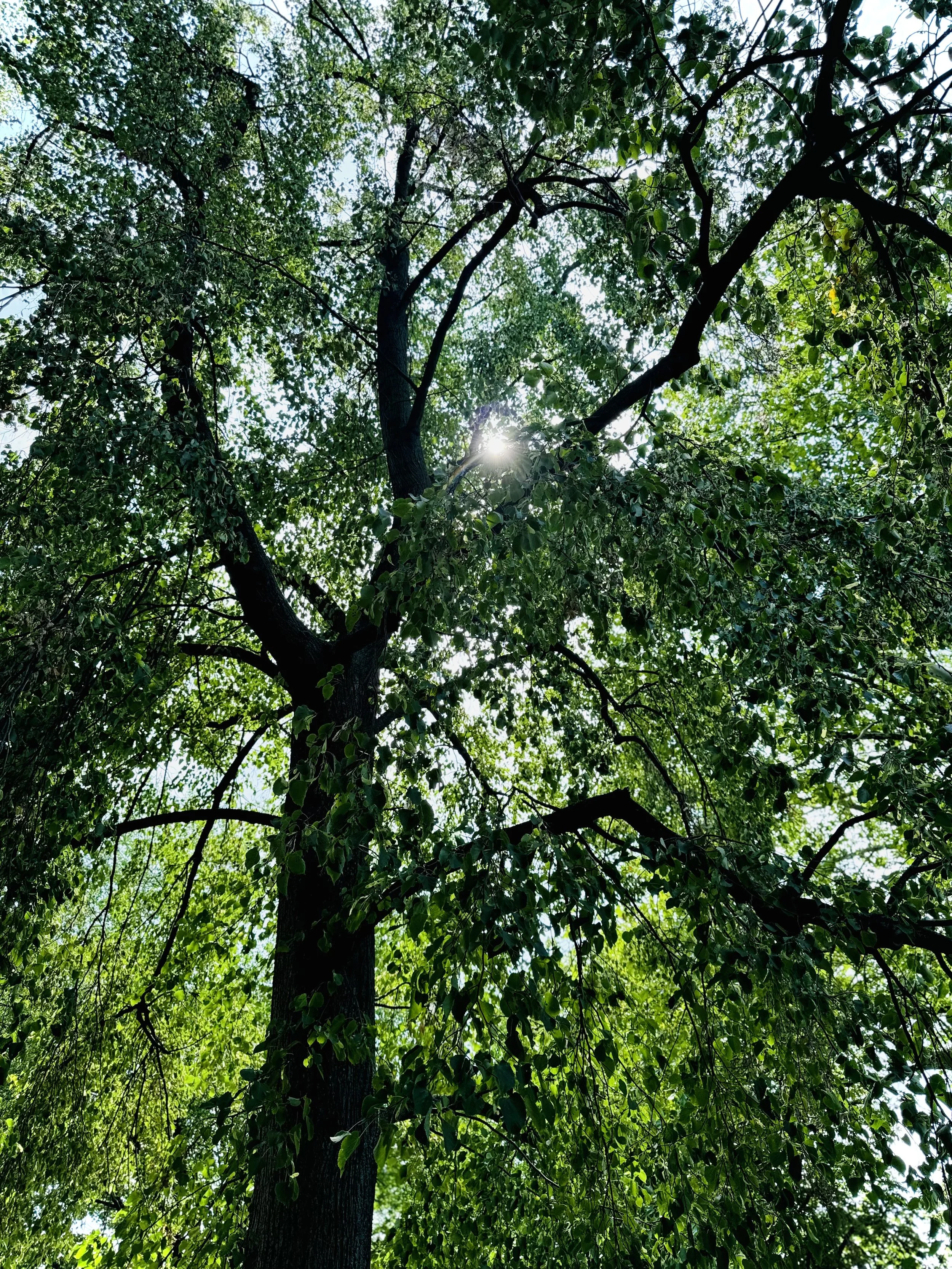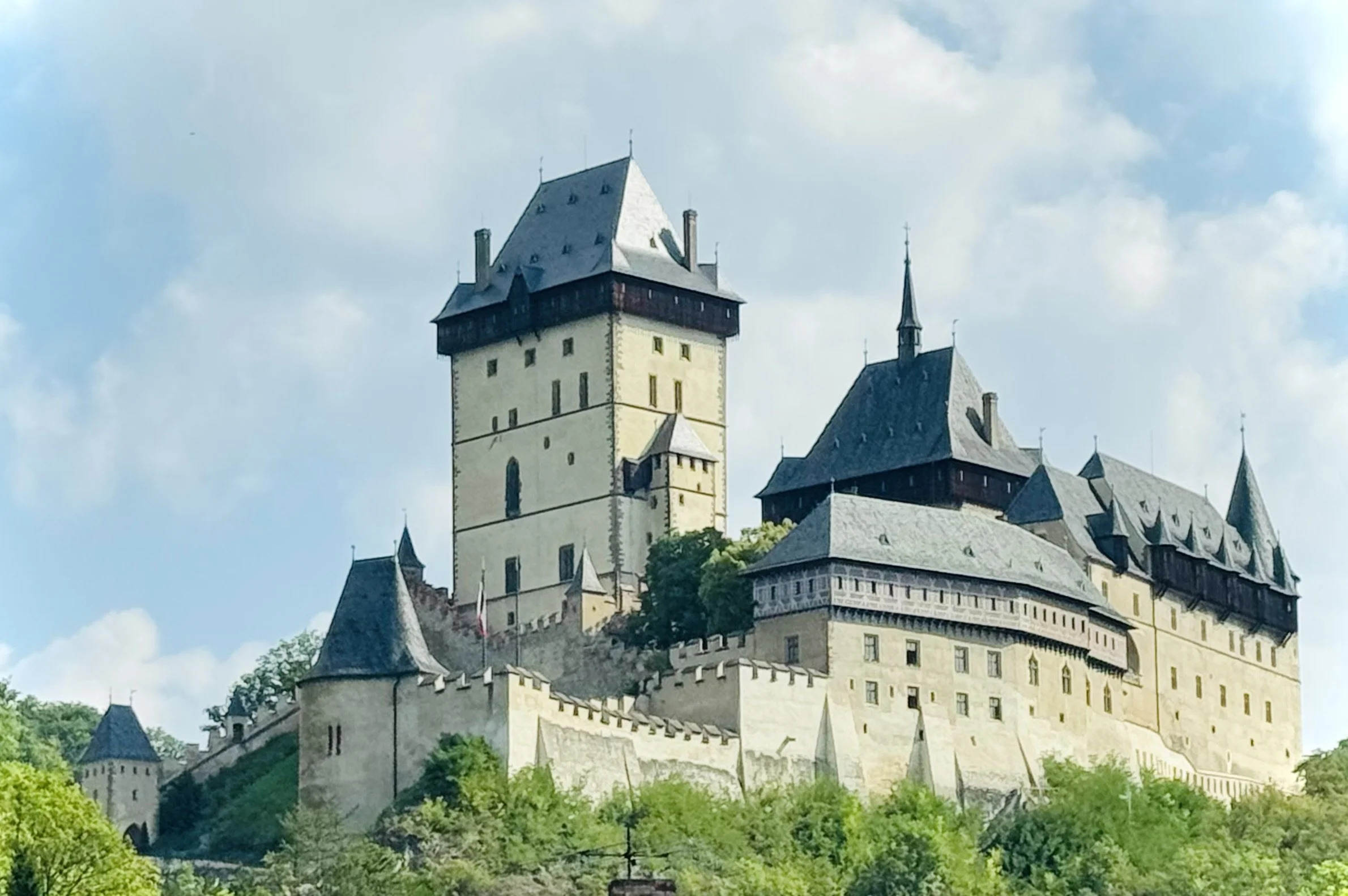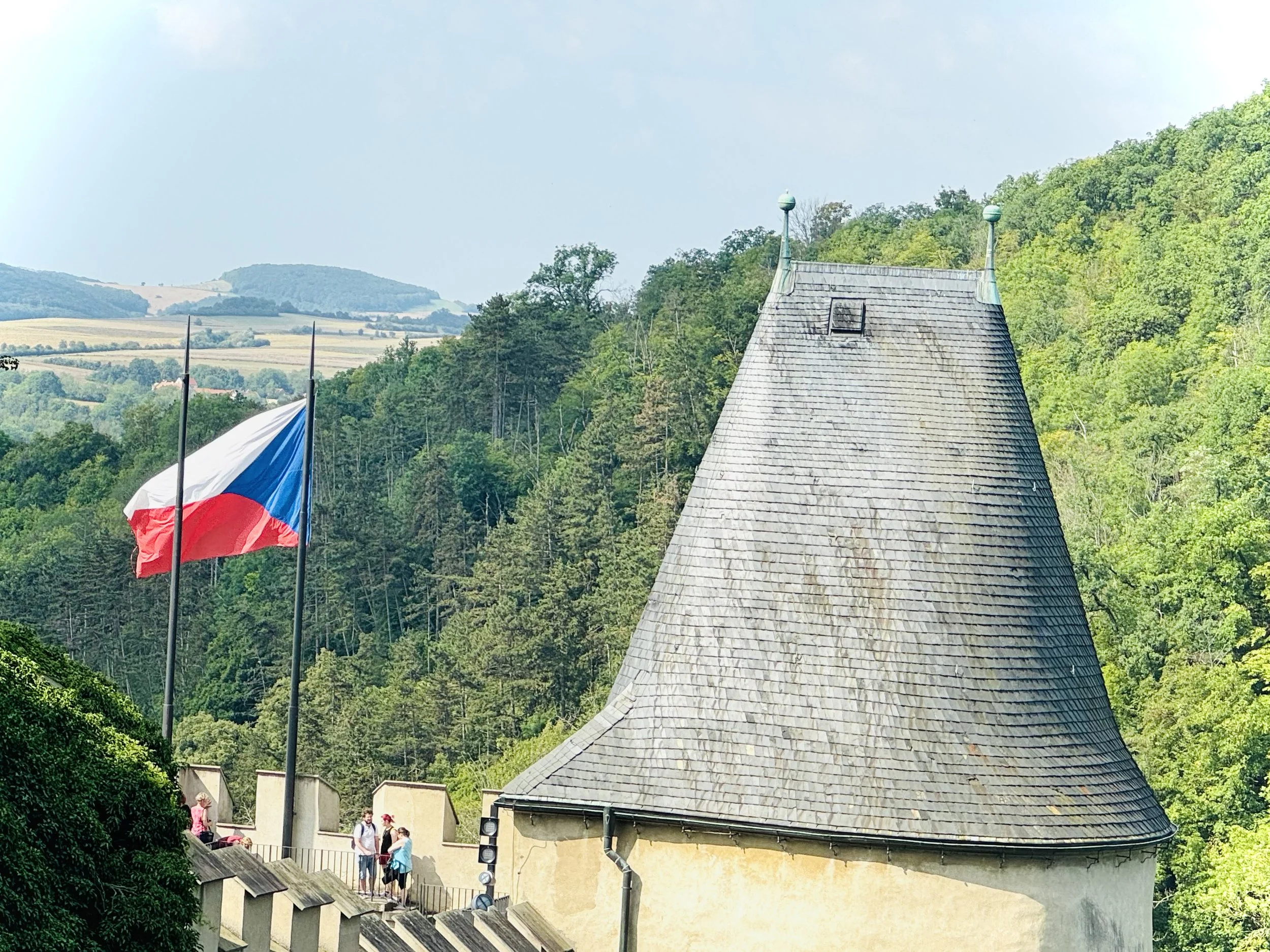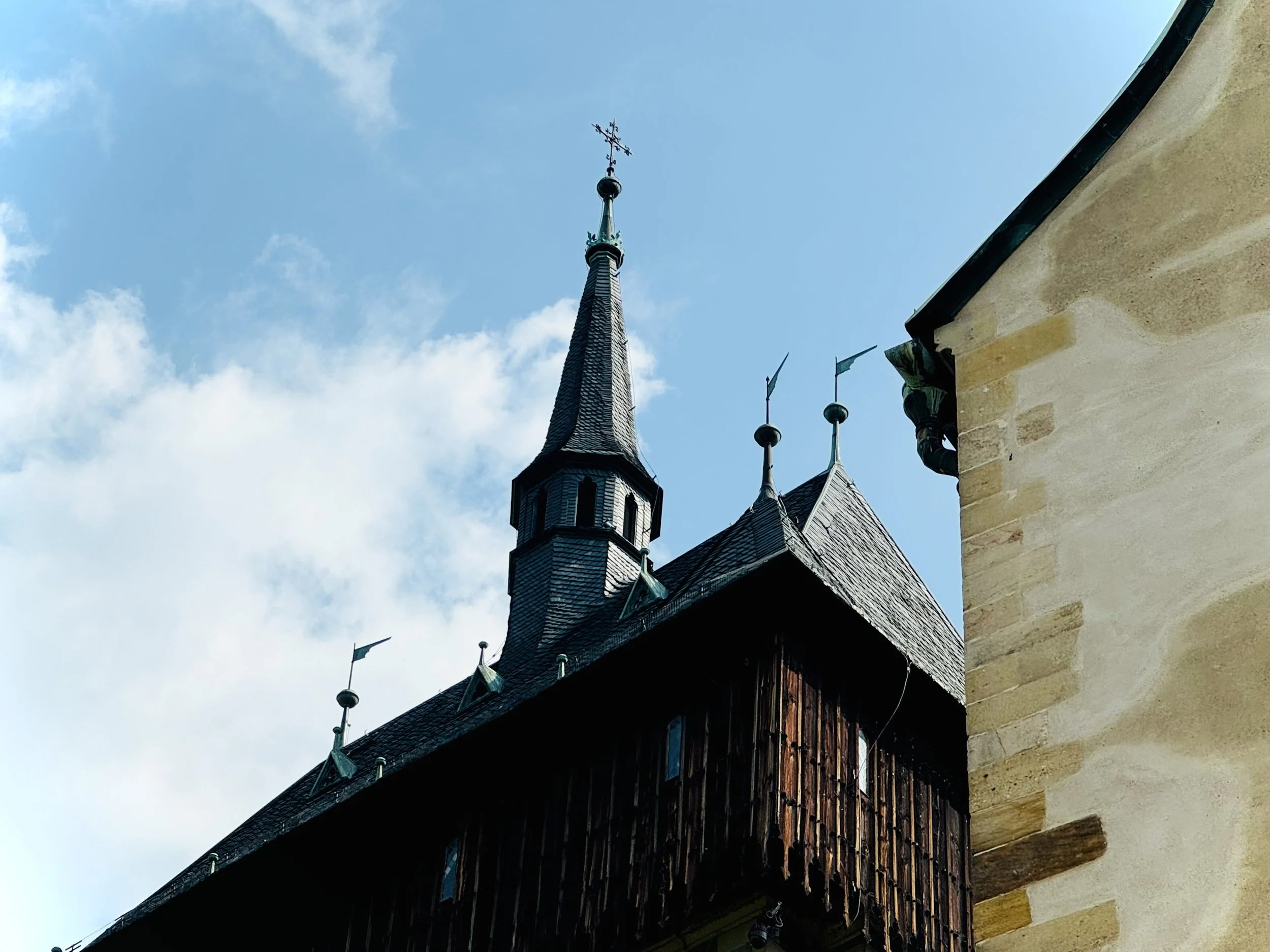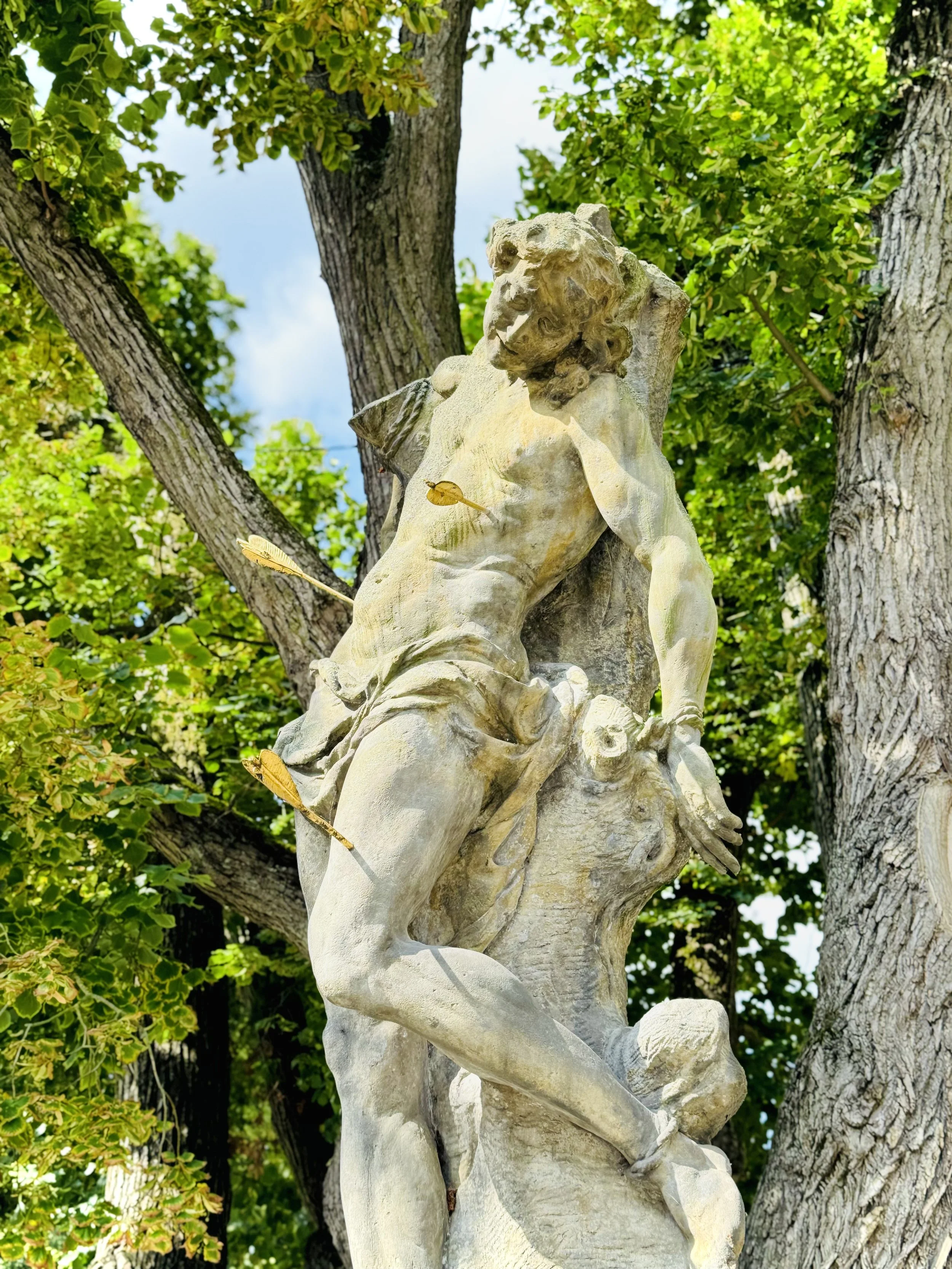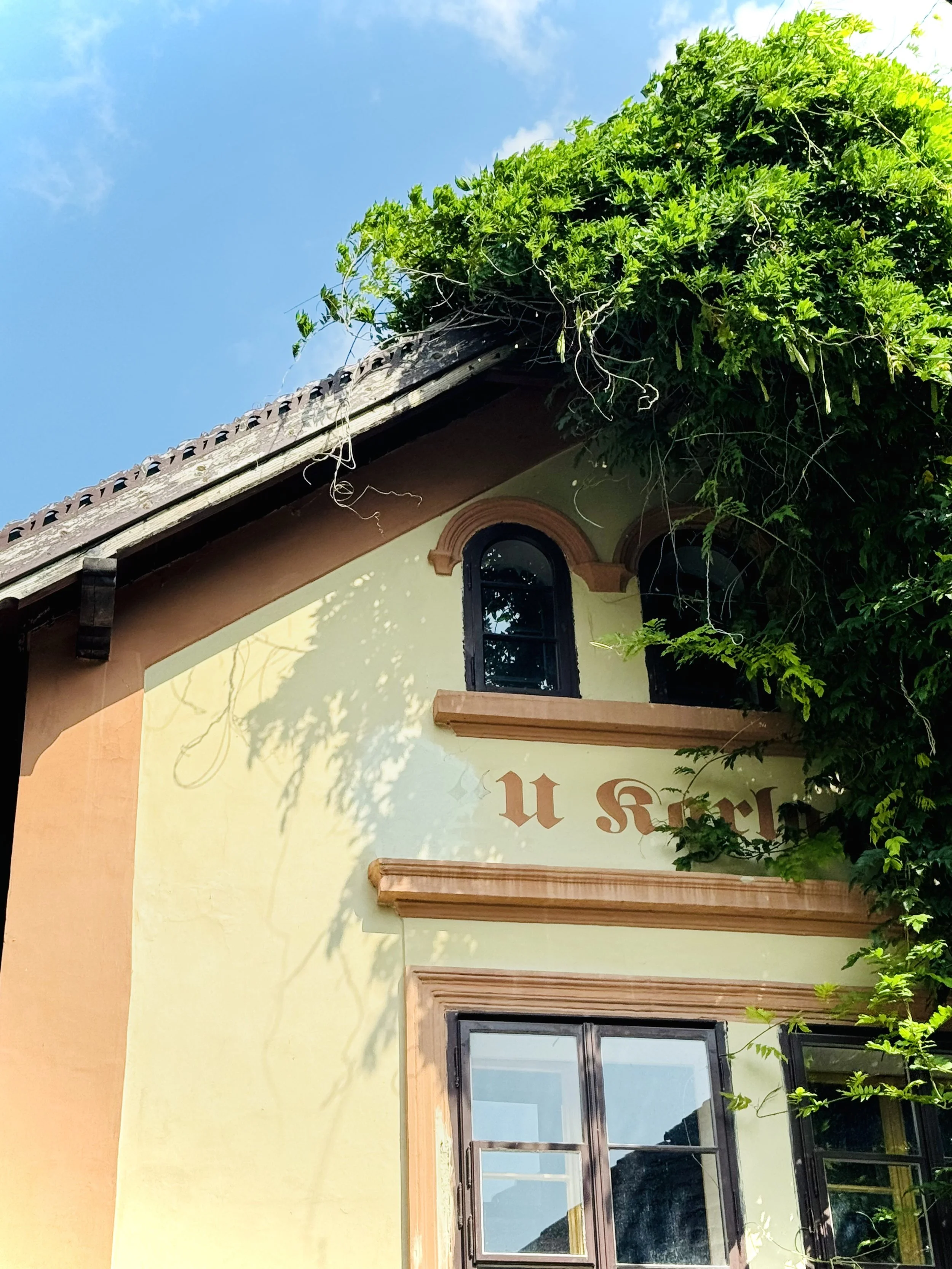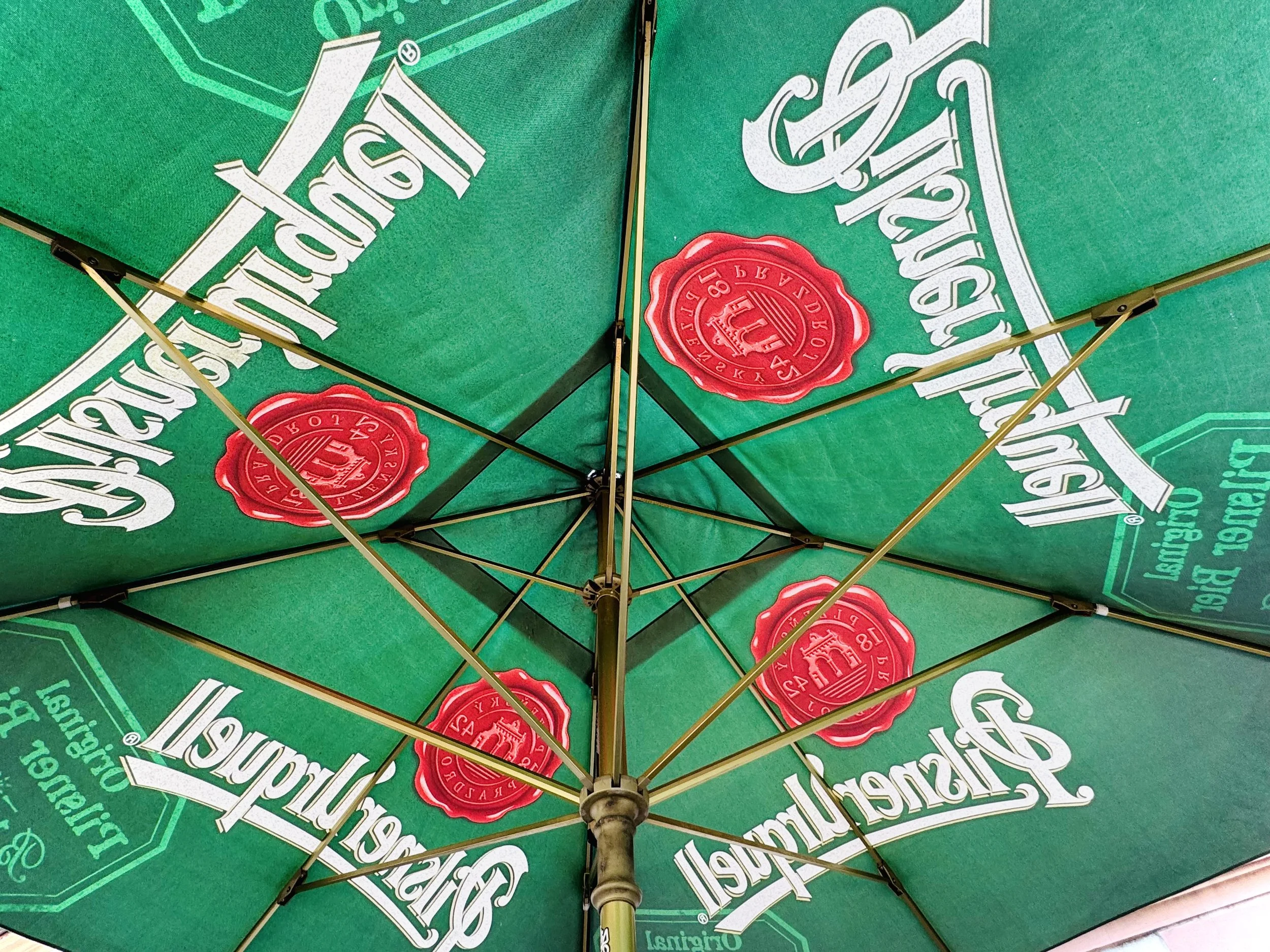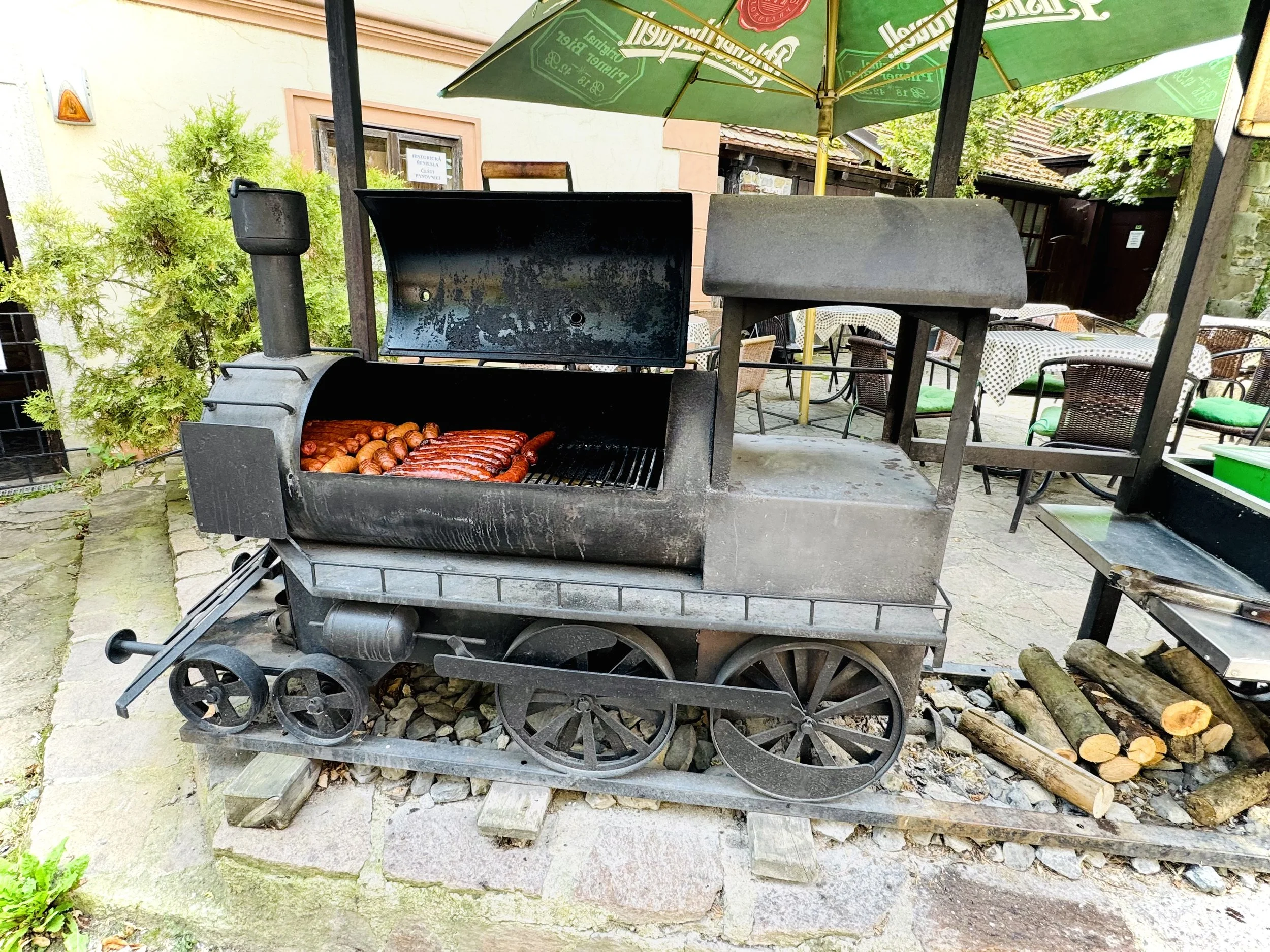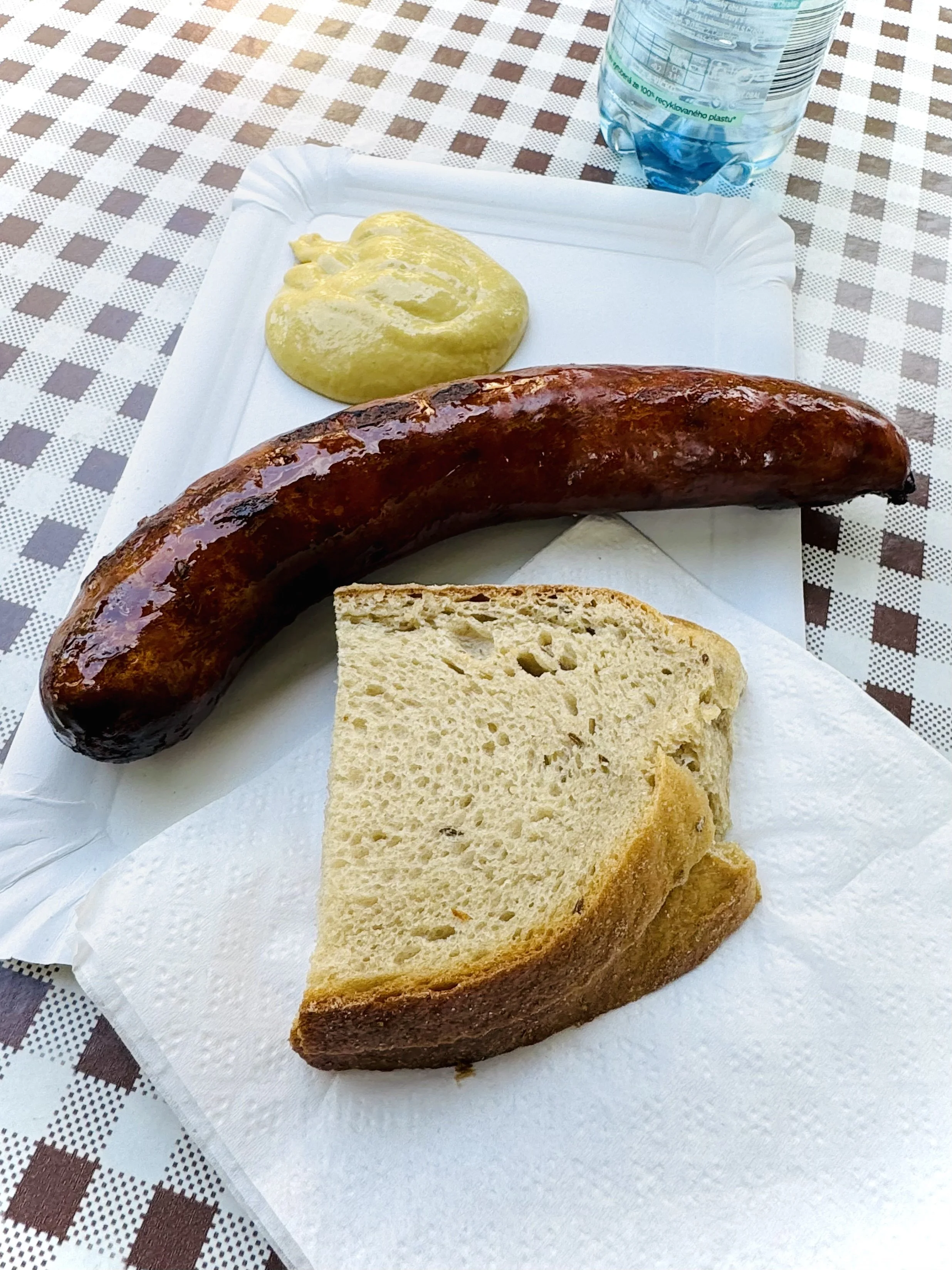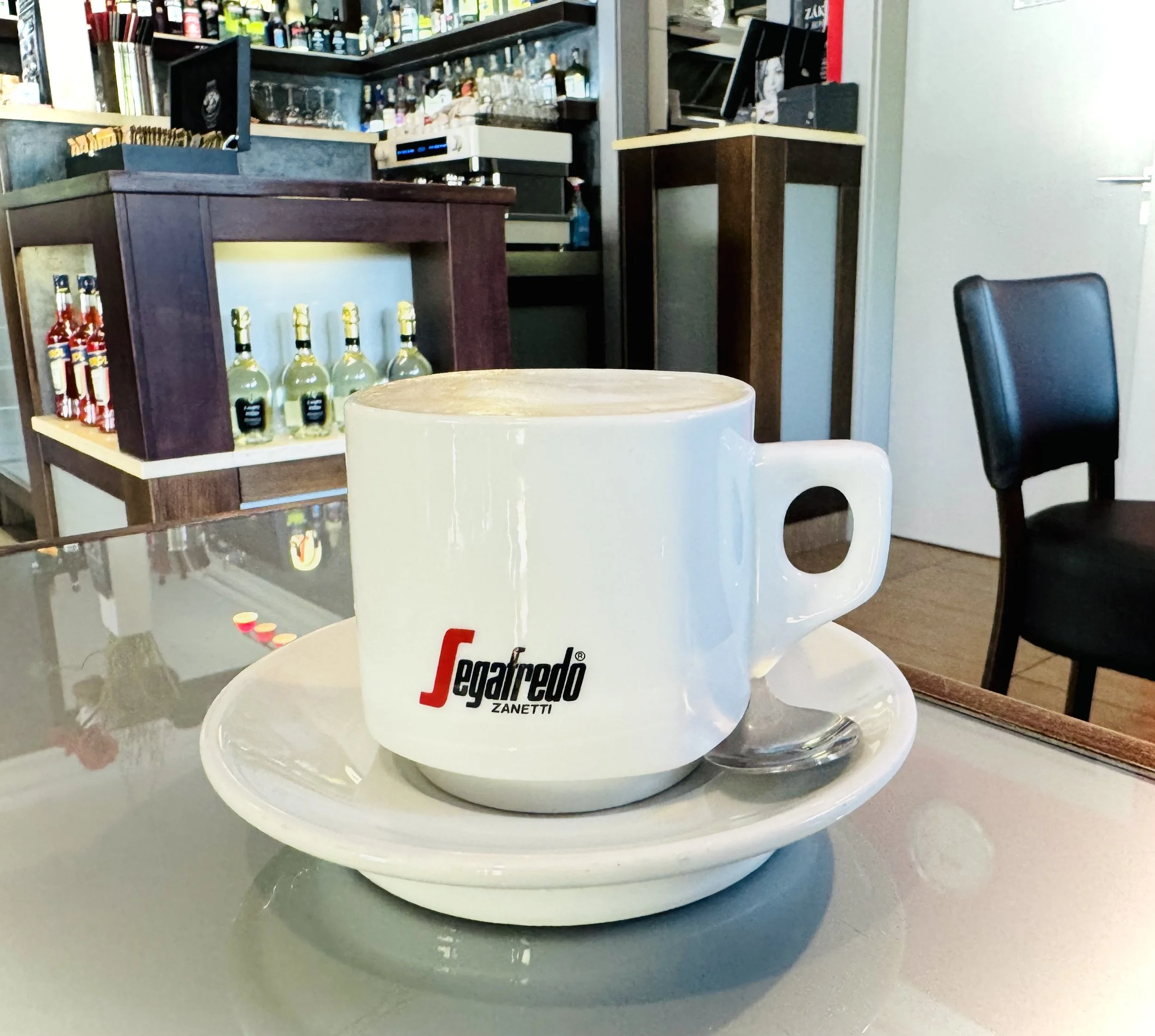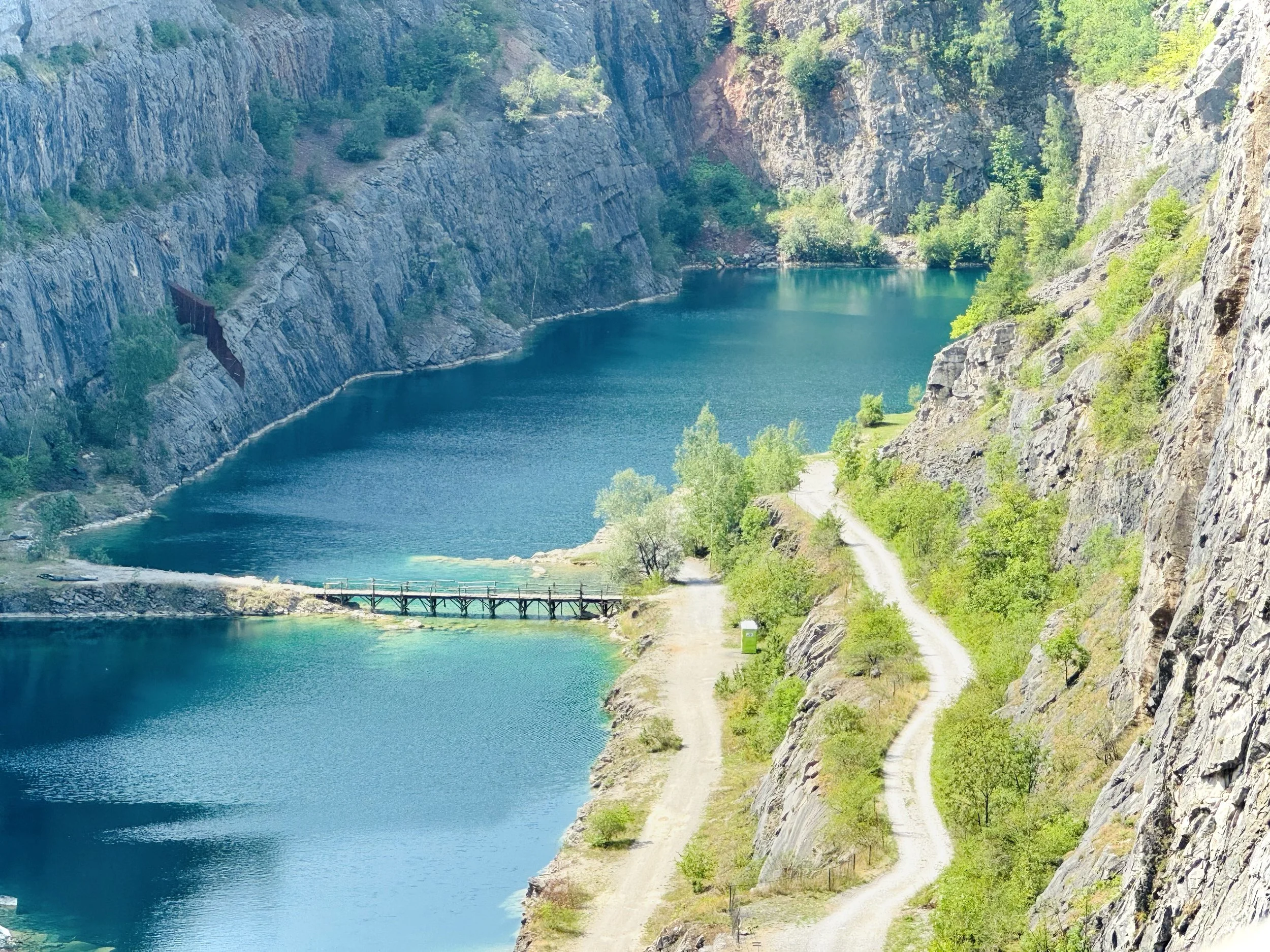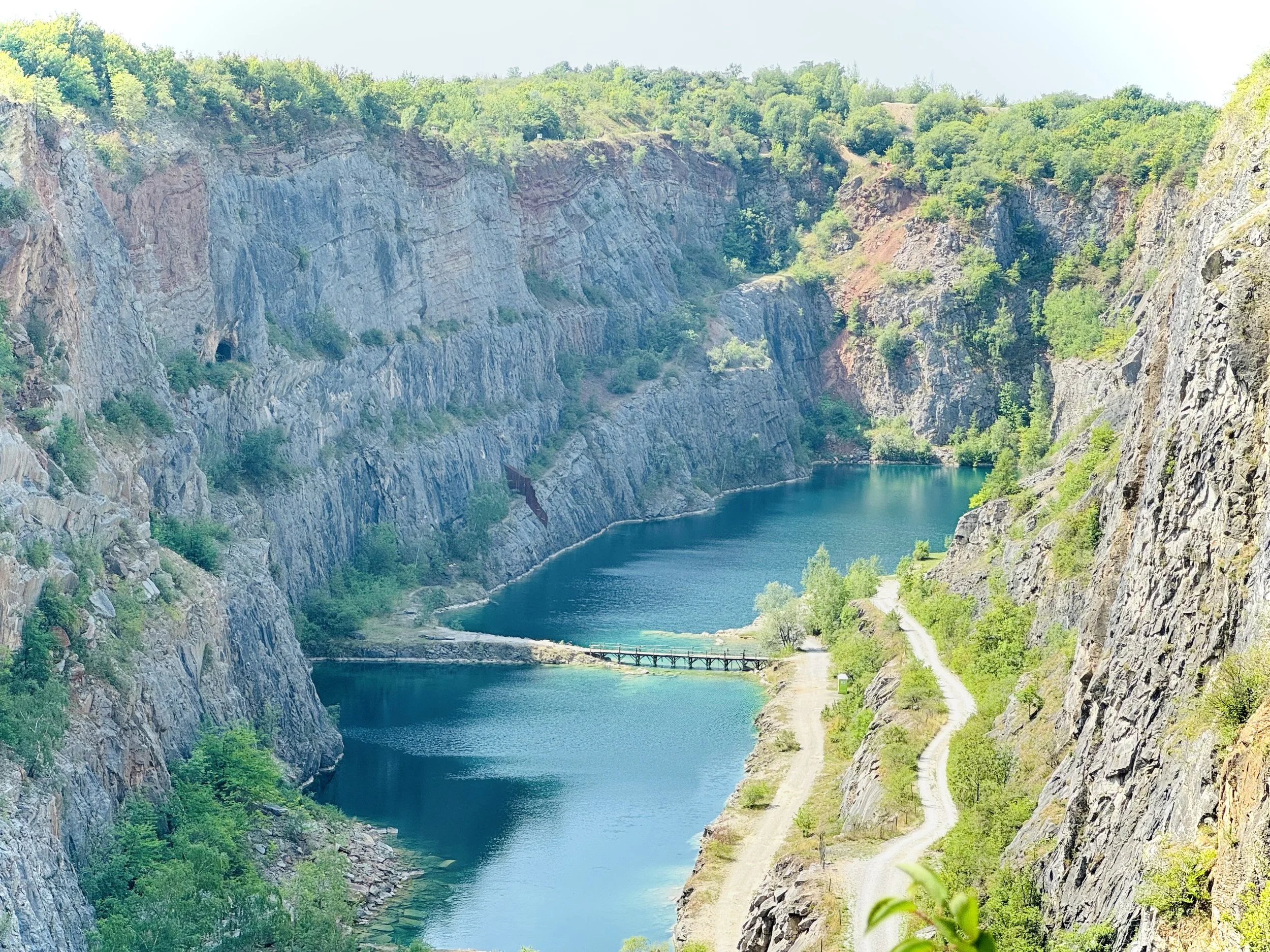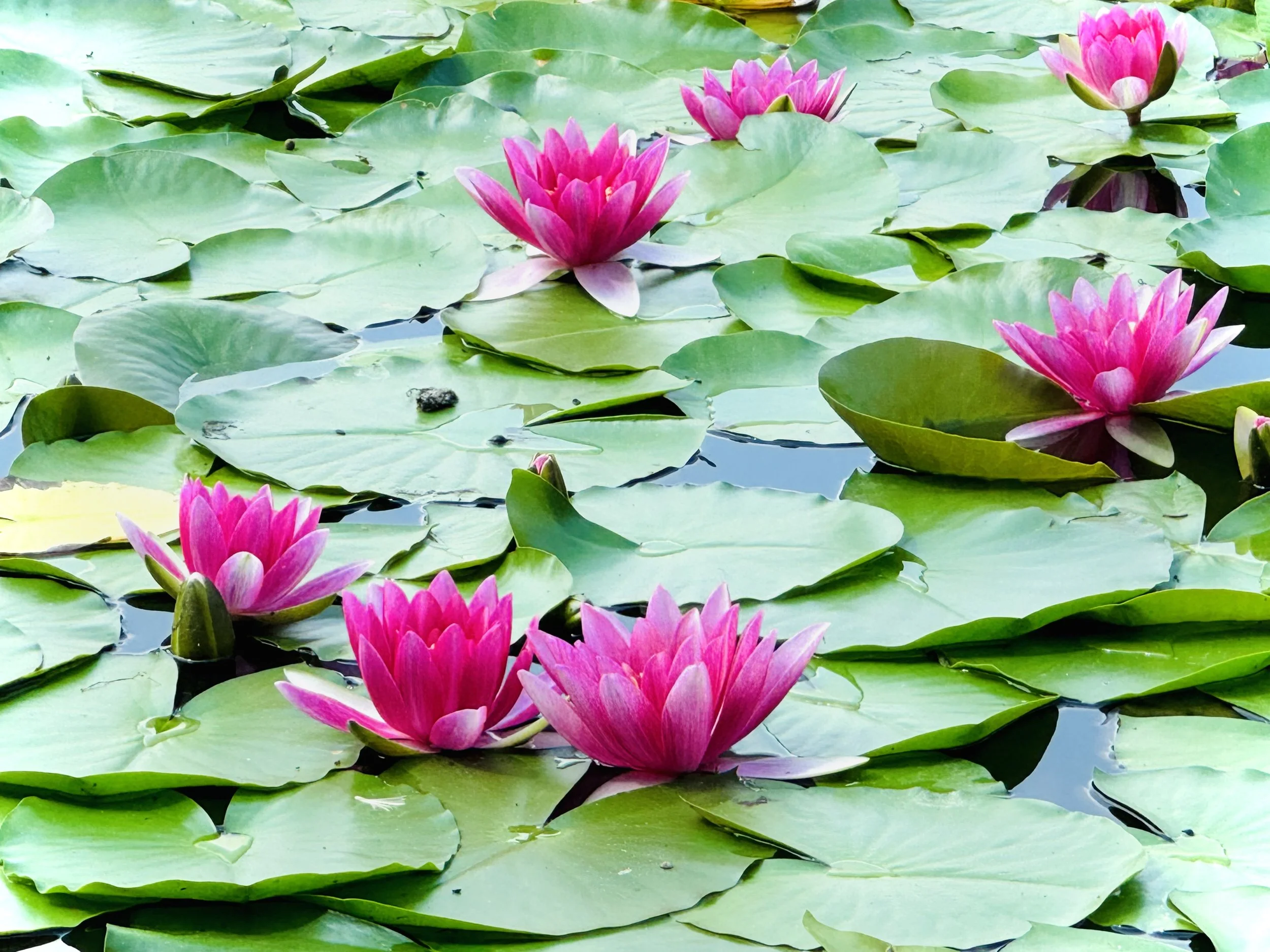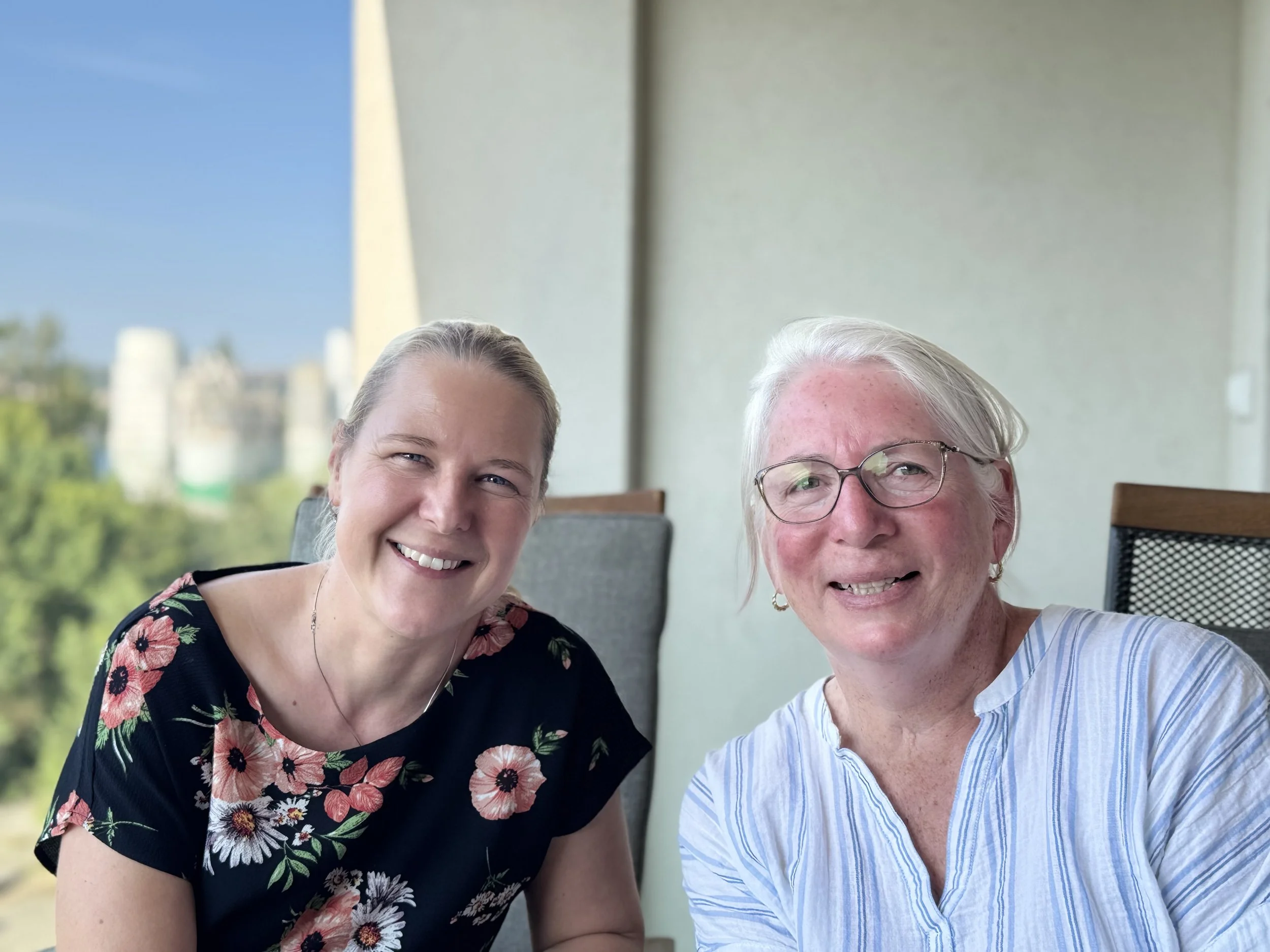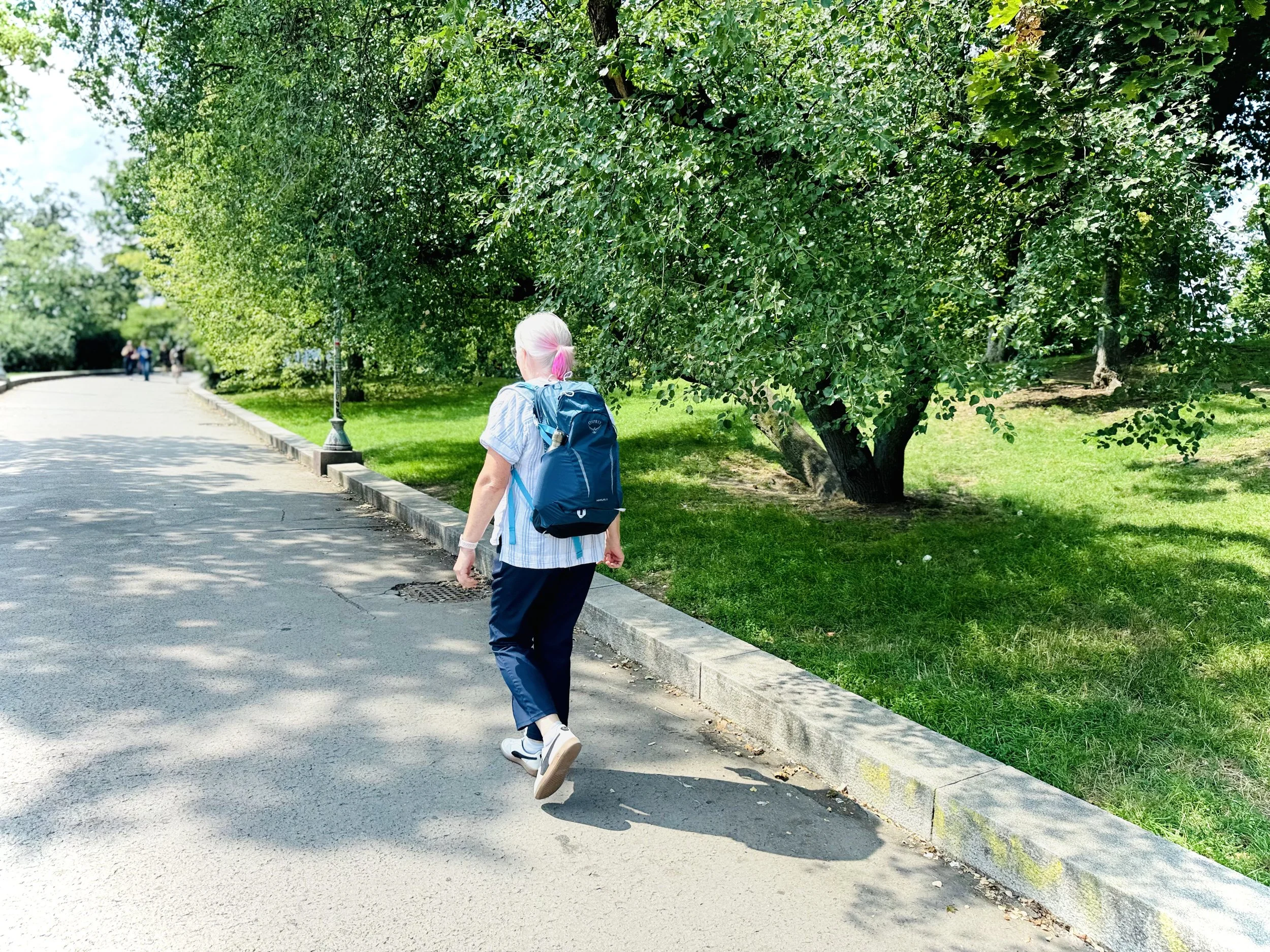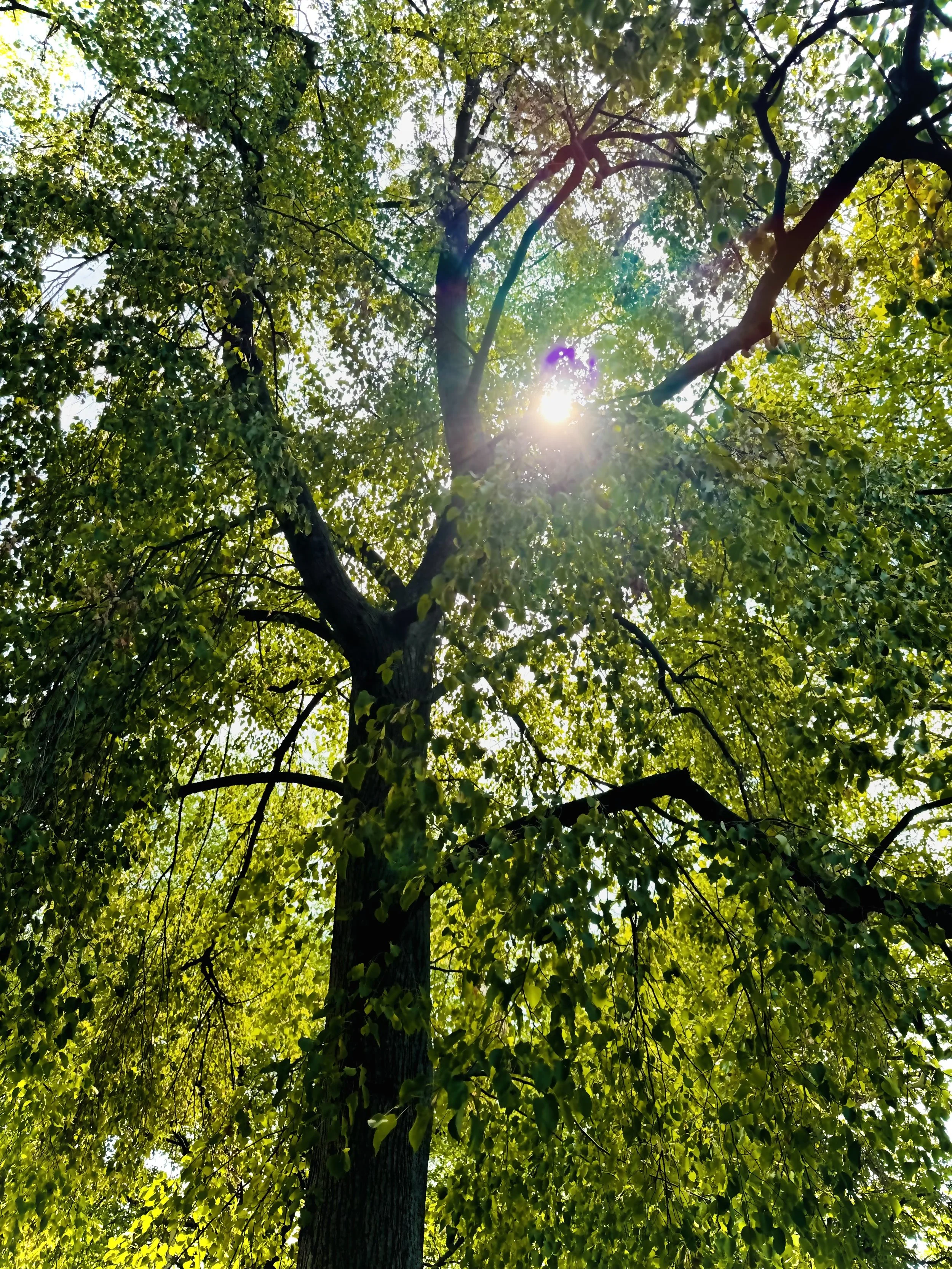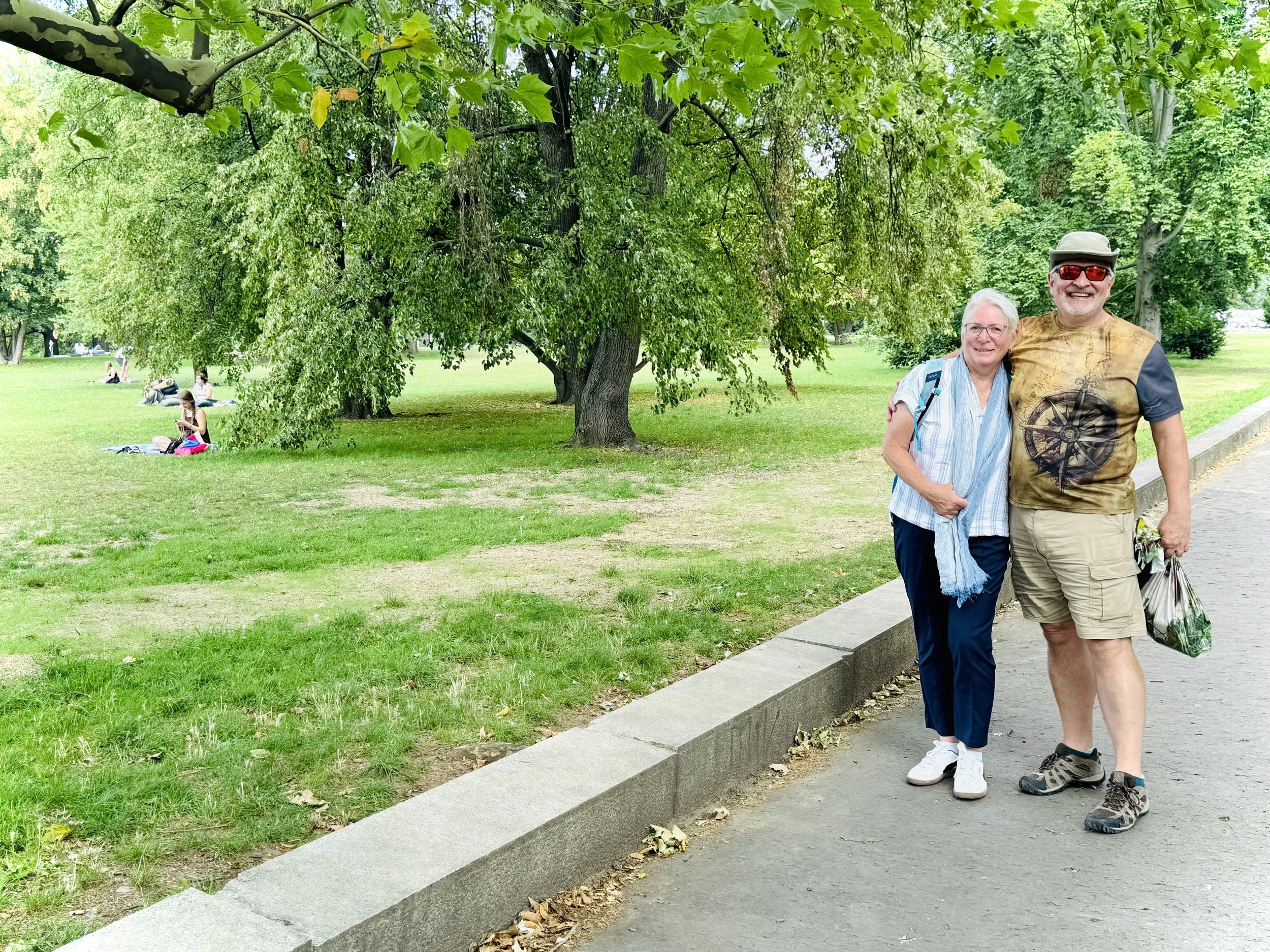7. The Linden Tree—Quiet, Enduring Guardian
Sunday, August 10
Last Day of the Trip – Eastbound towards our real purpose: to stand under a Linden tree in Prague’s Letná Park, where the heart of this trip—and its goodbye—was waiting.
We left Plzeň at 9 AM, the car packed with the efficiency of people who were eager to escape the tiny BnB my mom booked - aka someone’s “attic”, literally.
We made our way out of the city and into the rolling countryside, the kind of pastoral spread that feels ancient. The August morning was mild, the light soft but growing warmer, the sky just beginning to lose its dawn haze.
The fields were ripening—wheat standing in tall, brassy waves, others already cut and rolled into great gold bales scattered like coins across the hills. Farmhouses dotted the roadside, most in that traditional Czech style: whitewashed walls, red-tiled roofs, window boxes spilling geraniums. Between the houses, narrow lanes veered off into clusters of barns and vegetable gardens, each one bordered by low stone walls or wooden fencing that looked like it had been there since the days of the Great Bohemian Kings.
Everything seemed like a fantastic photo opportunity, even the wheat bales—to which Rod reminded me, “you can see that in Navan.”
Except for my mom’s constant reminders that “this is a 50 zone”, it was a quiet Sunday morning. In the villages we passed, the only movement came from families on bicycles—children in bright helmets weaving behind parents, baskets strapped to the front for bread or fruit from a neighbour’s stall.
We detoured slightly from the road to Prague — through the heart of the Český kras region, its limestone hills pockmarked with dense forests, farmland, and quarries. Halfway to the capital, the towers of Karlštejn Castle appeared, sharp and dark against the green ridge.
Apple Maps, in its infinite wisdom, routed us straight up the winding road to Karlštejn—a road we soon realized was meant for pedestrians, not overconfident rental cars. Dear Reader, if at some point you find yourself blindly trusting the maps, you might just drive right into the courtyard of a 14th century castle, as we almost did.
The official parking, it turned out, was a good one to two kilometres behind us, somewhere back down the hill where the civilized people had stopped and watched us ascend.
We reversed with a vengeance and parked at the base and began the climb up the winding cobblestone path. It was at least 2-3km uphill, both ways. I charged ahead like a budget tour guide on a tight schedule, while Rod, ever the gentleman, hung back gallantly to shepherd the elderly (aka my mother) at a more reasonable pace.
The path was lined with shops selling postcards, weird hats, magnets, and the kind of medieval replica swords that would definitely get you detained at airport security. Every so often a whiff of grilled kolbasa cut through the air, just enough to remind you that the Czechs have always understood the link between meat and morale, especially on uphill hikes.
Finally at the top, the climb gave way to the castle gates—Karlštejn looming above us in all its 14th-century glory. Built by Charles IV to house the crown jewels of the Holy Roman Empire, it still radiates that “keep your poor hands off my treasure” energy, as illustrated by the requirement to pay to even use the washroom.
Beyond the gates, the view spilled out across the valley—and I imagined when kings rode these hills instead of shitty tourists with selfie sticks.
After a quick beer, kolbasa, and cappuccino refuel for brunch—because nothing says “balanced diet” like meat, caffeine, and pilsner before noon—we headed back down to the car.
On the way, we made a brief detour to Lom Velká Amerika, the so-called “Czech Grand Canyon.” It seemed to be a local Sunday hiking spot. A short walk brought us to the cliffside viewpoint, where turquoise water pooled far below, framed by sheer limestone walls.
Beautiful, yes—but also the kind of place where you instantly understand why the safety rail exists. Personally, I had just about enough of terrifying heights for the day. Mom and Rod took in the view, snapped a few photos, then allowed me to pull them back to the car.
Today, we had one mission.
The road to Prague stretched ahead, and so did the reason we’d come all this way.
Prague unfolded in front of us as we drove into the city, the Vltava curling through it like a ribbon. We walked into Letná Park without much talk, just the sound of our footsteps on the gravel and the wind moving through the leaves of Linden trees—the Czech national tree.
In old times, the Linden was sacred to the Czech people—seen as a tree of gentle peace, protection, and community. Villagers often held important meetings or dances under its branches, and planted them in cemeteries to protect fallen souls. And then under communism, the Linden was also quietly embraced as a cultural emblem that predated Soviet rule, a reminder of their older traditions, a reminder of who they truly are as a people.
We followed my mom as she retraced steps she’d once taken with Zed, her stride slowing with each turn deeper into the green hush of Letná Park. Zed had been so excited to tour her through Prague, and also this beautiful park overlooking the city, where he spent many afternoons as a young student.
The park air was warm but softened by shade, the light breaking and reforming as it passed through the restless leaves. Somewhere nearby, a guitar played, the notes drifting in with the soft clink of bottles from a family picnic. Around us, life went on—laughter, footsteps, the easy togetherness of people with nowhere else to be. A place for the people. A place surrounded by love and peace.
We passed students sprawled on blankets, young parents chasing toddlers across the grass, until we found it—the place. Two special linden trees, their branches arched toward one another like old friends leaning in close, framing a still view of the pond. On its surface, pink and white lilies floated, shifting slightly in the breeze—like memories, moving but never gone.
It was so peaceful there. It felt like the closest thing to heaven on earth, this shaded spot overlooking a pond with the soft sounds of happiness and love nearby.
Mom said this was where we would leave him.
And so we sat in a small circle beneath the double canopy, the ashes in their urn placed between us as if he had simply taken his seat.
Lindens had always been his favourite—fragrant in bloom, unshakable in form. It felt right, him here, in the green heart of the city he had loved. Lindens are believed to be more than trees but gentle guardians, protectors of Czech people.
One by one, Mom, Rod and I took our turn, letting his ashes fall into the grass between the two trunks, into the space that would hold him quietly, eternally protecting him.
We toasted, drank, and poured Samson dark beer and Becherovka, their scents—malt and anise—slipping into the warm air. No prepared speeches. No formal ceremony. Just words from three broken hearts, the leaves above whispering some promise we couldn’t yet believe: that someday we might not feel so angry, so sad, so hollow when we think about how we lost him so suddenly, so unfairly, so young.
We stayed a while after, sitting in the grass together with a couple more drinks, looking out at the pond from the shade. It didn’t feel solemn so much as final. He was here now.
We had set out to do this, and now it was done.
We came as four. We left as three.
Between the two lindens, in Czech soil, he now rests.
And we will return to Canada having left a piece of our hearts there too.
🌷
Rest in peace, Zdeněk Tůma, beloved husband, father, grandfather and friend.
